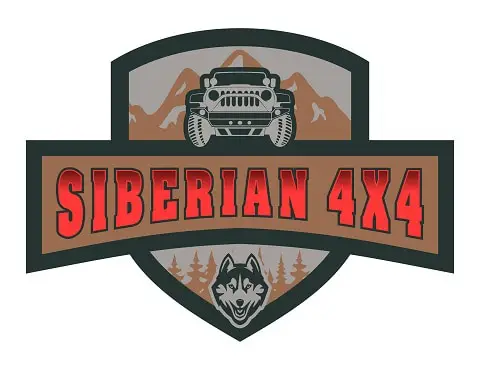Jeep and Ford are two of the most iconic SUV brands on the market, and after a long absence from Ford, they each released their own 2021 SUV models of the Jeep Wrangler and Ford Bronco. Both of these models will be serious contenders for consumers on the lookout for a reliable and efficient new vehicle. Still, the struggle is determining which is best considering their many differences.
We’ve provided an in-depth comparison of the Wrangler and Bronco by detailing the nine essential differences between the two. These differences will help you more easily determine which vehicle to choose.
Hang on till the end and we’ll give you our straight forward answer as to which one we think is best and why!
Top 9 Essential Differences Between the Jeep Wrangler and Ford Bronco
The new Ford Bronco was released in the summer of 2021, and countless SUV fanatics were/are anxiously waiting to get their hands on their own. However, many are questioning if they should invest in Ford’s latest and greatest when the Jeep’s 2021 Wrangler is also being released, not to mention the countless Wranglers released in previous years that are already available.
Jeep has long held an uncontested title to the off-road world. It’s hard to think that something could threaten that. However, that’s exactly what Ford is doing. And if you’re a brand loyal Jeep owner, we understand your nervousness at having a threat. But no matter who you are loyal to, competition breeds innovation, and to be honest, Jeep has been stagnant and lazy for a while now.
For the most accurate comparison, we’re going to detail the most significant differences between the 2021 models of both the Jeep Wrangler and the Ford Bronco so you can be informed and prepared to choose the option best suited to your tastes and lifestyle.
Wrangler vs. Bronco: Price Comparison
Let’s just get this one out of the way so you can really focus on the other essential differences without constantly pondering what all of these elements will cost you.
Although quality certainly reigns supreme with a new SUV, considering you want your investment to last for years to come, the price of that investment is nearly as important.
Each of these SUVs has numerous trims with their own starting sticker prices, so we’ve comprised each SUV and its trim prices into the table below for a clear and easy visual of their costs.
Both SUVs have two-door and four-door models, so we’re only going to compare model prices for the four-door for the sake of this table. To avoid confusion, the term “Unlimited” simply refers to the four-door Wrangler in the Jeep world. It’s not a trim level or option. This will allow you to see what the biggest bang-for-your-buck will cost.
To start off, we’ll look at Ford 7 levels of the new Ford Bronco. Prices range from $33,200 all the way to $61,110. Ford came out strong with a solid set of options that meet the needs of several varieties of enthusiasts.

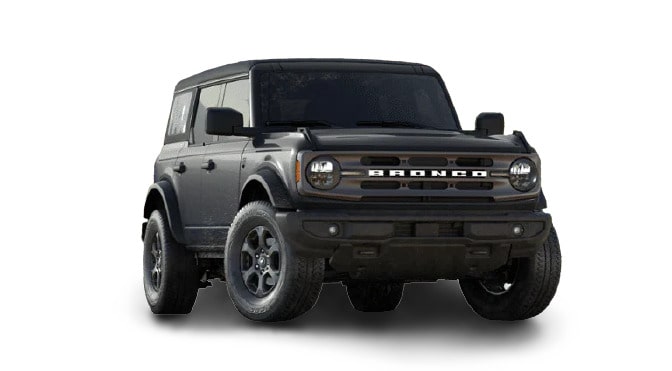
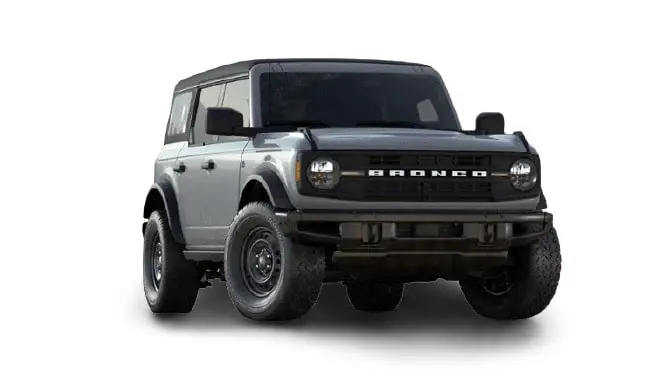

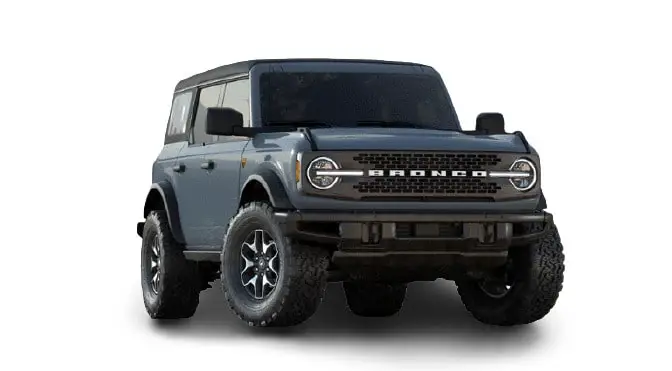
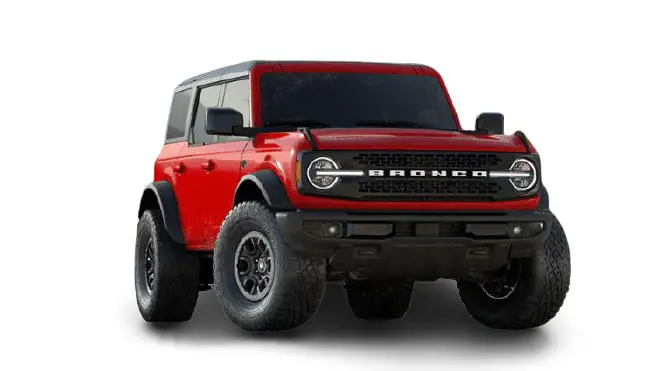
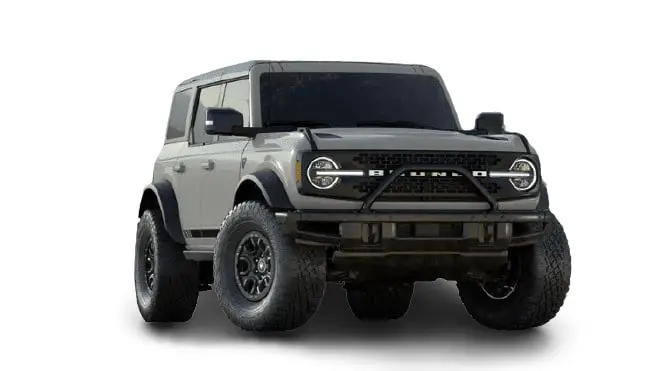
Jeep has entered this season with an astonishing 14 different Wrangler trim levels. That’s twice the amount offered by Ford and does not include model options like the EcoDiesel and Wrangler 4xE (all new electric/gas hybrid). We love options as much as the next but trying to choose between 14 can be a little overwhelming. Prices for the Wranglers range from $32,400 all the way up to the Hellcat-powered Rubicon 392 sitting at $73,745.
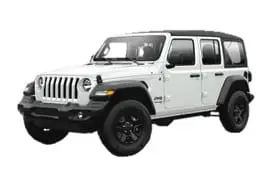
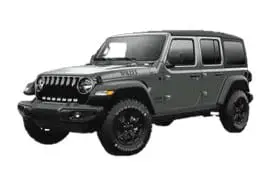
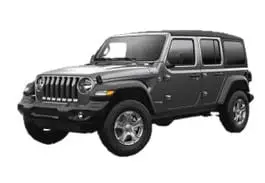
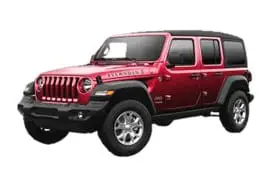
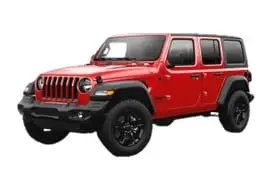

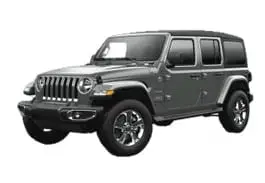


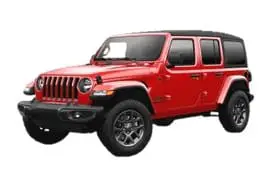
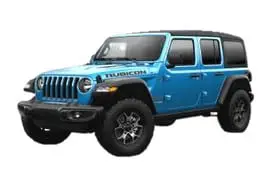

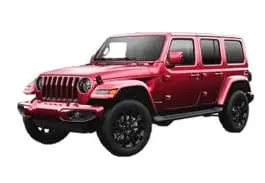
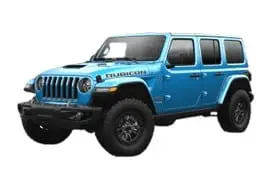
To see the two costs on a side-by-side basis, we’ve taken the top 7 most common Wrangler options and put them to their closest counterpart of the Bronco in the table below.
| 2021 Ford Bronco Trim Costs | 2021 Jeep Wrangler Trim Costs |
|---|---|
| Bronco Base: starts at $33,200 | Wrangler Base: starts at $29,995 |
| Bronco Big Bend: starts at $35,000 | Wrangler Sport: starts at $31,975 |
| Bronco Black Diamond: starts at $38,545 | Wrangler Sport S: starts at $35,175 |
| Bronco Outer Banks: starts at $41,450 | Jeep Wrangler Sahara: starts at $38,825 |
| Bronco Badlands: starts at $44,590 | Jeep Wrangler Rubicon: starts at $42,375 |
| Bronco Wildtrak: starts at $49,475 | Jeep Wrangler 4xe (hybrid variation for select models: Sahara starting at $47,995Rubicon starting at $51,695High Altitude starting at $53,570 |
| Bronco First Editon: starts at $61,110 | Jeep Wrangler Rubicon 392: starts at $73,500 |
As you can see, the prices differ significantly depending on the trim and which brand you have chosen. And there is certainly no shortage of choices. While the Jeep Wrangler indeed starts off cheaper than the Ford Bronco for its base option, other trims, like the Rubicon 392 and 4xe, quickly skyrocket above the Bronco’s priciest trim of the First Edition (which is already sold out).
Choosing the right trim is a whole separate process of its own, but if you’re overtly looking for the more affordable of the two, the Jeep Wrangler is the more budget-friendly SUV on average over the Ford Bronco.
Wrangler vs. Bronco: Powertrain Comparison
At the heart of any SUV is the engine, and both the Jeep Wrangler and the Ford Bronco have the most exceptional engines to their advantage.
At the time
We’ve gathered together the options for each vehicle and compared them below. Once again, the Wrangler offers almost twice as many choices as the Bronco. But that doesn’t mean that the Bronco’s two choices are something to highly consider and look into.
| Performance | Jeep Wrangler | Ford Bronco |
|---|---|---|
| Engine | 3.6L V6 / 2.0L I4 Turbo / 3.0L Diesel/6.4L V8 / Electric Hybrid | 2.3L I4 Turbo/ 2.7L Twin-turbo V6 |
| Horsepower | 285 / 270 / 260 / 470 / 375 hp | 270 / 310 hp |
| Torque | 260 / 295 / 442 / 470 / 470 lb-ft | 310 / 400 lb-ft |
| Transmission | six-speed manual / eight-speed automatic | seven-speed manual (6+1 crawler) / 10-speed automatic |
| Towing rating | 3,500 lb. | 3,500 lb. |
As is clearly depicted in the chart above, one of the most significant differences between the Jeep Wrangler and Ford Bronco is that the Wrangler has five different engine/motor options for various trims versus the Bronco that only offers two.
However, don’t be fooled by the Bronco’s lack of choice, as it boasts a much smaller and efficient EcoBoost turbo engine that can do just as much heavy lifting as the Wrangler, as demonstrated by their shared towing rate.
This, paired with its seven-speed manual transmission of the 2.3-liter engine, warrants the Ford Bronco as the eco-friendlier option for gas. However, Jeep takes the overall fuel economy award when equipped with the eco-diesel or hybrid options.
As far as base engine options, the torque on both the Ford Bronco’s engines exceeds the Jeep Wrangler’s options. Torque is usually king in the off-road world so this is extremely appealing. Especially for those of us who don’t want to pay a premium for the diesel, electric, or hellcat upgrades from Jeep.
If you have the money to shell out, there’s no arguing with the instant full torque an electric motor provides or the roaring 8 cylinder Wrangler 392 that both put out 470 lb-ft of torque.
Overall, both companies offer some pretty appealing options in the powertrain department. The Ford’s twin-turbo V6 and turbo I4 are nothing to be slept on. Both provide great horsepower, torque, and fuel economy.
However, our opinion is that Jeep wins this round simply for more engine/motor options that differ greatly. You have three gas options, a diesel option, and an electric option all with really good output. Hard to argue with that.
Wrangler vs. Bronco: External Dimensions
Size isn’t always what matters, but it can certainly play a key role in your decision between the Jeep Wrangler and Ford Bronco.
Despite their similarities in design at first glance, these two SUVs differ significantly in terms of external dimension, which, in turn, affect their interior space and cargo capacity that we’ll discuss later.
Because each SUV has various trims offered in two and four-door designs, their external dimensions can differ depending on which combination you’ve chosen. For instance, the Bronco’s Wildtrak trim is the widest option of all the trims between both SUVs, measuring at a staggering 79.3 inches wide.
However, in terms of their base, there are some areas where each brand excels, and the other falls short.
| Dimension | Base 2-Door Wrangler | Base 2-Door Bronco | Base 4-Door Wrangler | Base 4-Door Bronco |
|---|---|---|---|---|
| Length | 168.8 in | 173.7 in | 188.4 in | 189.4 in |
| Width | 73.8 in | 75.9 in | 73.8 in | 75.9 in |
| Height | 73.6 in | 71.9 in | 73.6 in | 72.9 in |
| Wheelbase | 96.8 in | 100.4 in | 118.4 in | 116.1 in |
The Ford Bronco and the Jeep Wrangler take turns when it comes to having a wider wheelbase, as the Bronco takes the title with the base 2-door vehicle, but loses to the Wrangler by a couple of inches when both are offered as a four-door vehicle.
The Bronco is consistent when it comes to being wider than the Wrangler. For some, this is a positive, and for others maybe not so much. Both of these vehicles in their two-door configuration are quite nimble. But every inch counts when trying to squeeze between trees off-road. So wider isn’t necessarily better.
On the flip side of that, however, a wider base usually results in a more stable ride.
When it comes down to comparing height, the Jeep Wrangler, at least in its base trim, is 1.7 inches taller than its competitor in the 2-door option and 0.7 inches in the 4-door option.
However, if you pair the Bronco with the Sasquatch package that provides 35-inch tires versus the base 33-inch tires, its overall height exceeds the base Jeep Wrangler at 73.9 inches. So, your trims and packages can make quite the difference when comparing specs.
I think it’s safe to call this round a draw as both vehicles have aspects desired by different customers.
Wrangler vs. Bronco: Interior Space
The external dimensions of an SUV can be deceiving when it comes time to inspect its internal space. Luckily, both the Ford Bronco and Jeep Wrangler fare decently well in providing a spacious and comfortable ride for all passengers.
In most cases, the Ford Bronco is a larger SUV than the Jeep Wrangler and supplies more internal space in all areas except rear headroom space.
Comparing the two-door Ford Bronco to the hardtop two-door Jeep Wrangler, you’ll find that its 41.0 inches of headspace in the front outmatches the Wrangler’s 40.7, but it loses this battle in the rear with 39.8 inches versus the Wrangler’s 40.2 inches.
However, the Ford Bronco excels when you consider other internal space elements like legroom and front shoulder space.
Both its front and rear legroom measurements surpass the Wrangler at 43.1 inches in the front and 36.3 inches in the rear compared to the Wrangler’s 41.2 inches in the front and 35.7 inches in the rear.
Legroom is great, but since a passenger’s shoulders are much wider, this is arguably the more critical spec. When it comes to shoulder space, the Wrangler and Bronco are more even as one claims the better front measurement (Bronco’s 57.1 in. vs. Wrangler’s 55.7inches) and the other claims the rear measurement (Wrangler’s 57.7 in. vs. Bronco’s 51.8 in.).
Ultimately, if you’re looking for the most spacious SUV, the Ford Bronco is going to be your top choice here, particularly if you rarely have rear passengers and want optimal space upfront.
Wrangler vs. Bronco: Cargo Capacity & Payload
As these SUVs are often used for long trips and off-roading adventures, you’ll want to make sure it has plenty of cargo space and can handle heavy rear loads even if it’s pulling attachments like a boat or camper.
We’ve already mentioned that the Ford Bronco and Jeep Wrangler are on equal footing with a maximum towing capacity of 3,500 pounds for their four-door option. Hence, the differences here lie with how much they can carry and the space you’re given.
In terms of payload, the base four-door Bronco with a 2.3-liter EcoBoost I-4 engine and 10-speed select shift automatic transmission can handle a maximum of 1,444 pounds versus the Jeep Wrangler’s base four-door trim’s maximum of 1,233 pounds.
However, although it still doesn’t exceed the Bronco, some of Wrangler’s other trim options provide an increased capacity, such as the Rubicon offering a maximum of 1,351 pounds.
It wasn’t easy to directly compare the cargo space of the Bronco to the Wrangler at first, as the Bronco hadn’t released this measurement for quite some time.
Now, we can adequately compare the two, but bear in mind that door and trim options will alter the numbers slightly.
| Dimension | 4-Door Ford Bronco | 4-Door Jeep Wrangler |
|---|---|---|
| Luggage Capacity (space when seats are up) | 35.6 cubic feet | 31.7 cubic feet |
| Maximum Cargo Capacity (space when seats are folded down) | 77.6 cubic feet | 72.4 cubic feet |
Considering the Ford Bronco is larger than the Jeep Wrangler in nearly all its dimensions, it’s no surprise that it excels in the realm of cargo capacity as well. Plus, its increased payload certainly helps you utilize all that space without worrying about overloading your nice new SUV. Point for Bronco.
Wrangler vs. Bronco: Off-Roading
In addition to the crawl ratio, this is where the meat of the debate lies. Very few people consider buying the Jeep Wrangler or Ford Bronco without the predominant motive of using it for off-roading adventures.
This is also a very trick category to give a victor to as so much depends on what your ‘type’ of off-roading looks like. Are you a desert bombing, long road-traveling, relatively flat terrain kind of person or are you rock-crawling, high-flex, technical trails kind of person?
While we believe each vehicle can do well at both, we think each has its area of expertise.
The Bronco’s IFS (independent front suspension) makes it an amazing Overlanding, desert racing, long-road trip option. The Wrangler’s solid front axle, however, still makes it King in the rock crawling and high-flex scenarios of off-roading.
But before you make this significant purchase and test the terrain, you’ll want to be sure whichever option you choose can handle your lifestyle and needs.
We’ll start by comparing the most essential off-roading dimensions for each SUV’s four-door option.
However, instead of opting for the base Jeep Wrangler and Ford Bronco, we’re actually going to use the Wrangler’s Rubicon and the Bronco’s Badland trims for this comparison, as they are often agreed to be each SUV’s best trims for off-roading, if not overall.
| Off-Roading Geometry | Bronco: Badlands | Wrangler: Rubicon |
|---|---|---|
| Ground clearance | 11.5 inches (with 35-inch tires) | 10.8 inches |
| Approach angle | 43.2 degrees | 43.9 degrees |
| Breakover angle | 26.3 degrees | 22.6 degrees |
| Departure angle | 37 degrees | 37 degrees |
| Water fording | 33.5 inches | 30 inches |
| Track | 65.0 inches | 62.9 inches |
Comparatively, the Bronco is better suited to off-roading dimension-wise, as it outmatches the Wrangler in nearly every category but approach angle, where the Wrangler excels by .7 degrees.
Approach angle is undoubtedly crucial for off-roading, as it provides more front clearance when crawling before the SUV relies on its skid plates. However, without a decently high break-over angle and departure angle, your SUV is likely to damage its undercarriage or rear trying to clear obstacles.
For this reason, combined with the perk of 3.5 extra inches in water fording, we believe the Ford Bronco is best suited to most off-roading adventures. Using the Sasquatch package will only help increase the odds of a smoother, safer off-roading experience, but it certainly isn’t required.
Note: Remember when we said that competition breeds innovation? Well, Jeep played their cards well here. As soon as the Bronco was released, Jeep released the 4xE, the Rubicon 392, and put the Rubicon Xtreme Recon in the works. The Rubicon Xtreme Recon will outshine the Sasquatch package by coming with 35s, a 1.5-inch lift, bead-lock wheels, gearing choices for owners, superior off-road geometry, and a crazy crawl ratio.
Wrangler vs. Bronco: Crawl Ratio
Crawl ratio is crucial for off-roading, as it represents how much of the SUV’s torque is multiplied through its axels before ground contact.
What you’re really looking for here is a high crawl ratio; the higher the ratio, the more force is applied to the ground. This will enable your SUV to easily move over uneven terrain and obstacles.
If you remember those engine and torque measurements mentioned previously, this is where they can really shine. Surprisingly, the transmission type can make a massive difference in this category for both vehicles.
The Jeep Wrangler using a manual transmission boasts an 84.2:1 crawl ratio, which is surprisingly impressive considering its powertrain dimensions. Once you switch to automatic, however, that number quickly plummets to a mere 77.2:1.
Now, before you write off the Wrangler, we’d like to note that the Bronco has an even lower automatic crawl ratio at 67.8:1; so if this is the transmission you’re most comfortable with, the Wrangler is the better choice.
For those of you ready and raring to go in the manual transmission, you’re going to want to board the Bronco, as it offers an astonishing 94.7:1 crawl ratio that pretty efficiently takes the win. However, remember the Rubicon Xtreme Recon we just mentioned above? Well, it’s bragging a crawl ratio of 100:1 when equipped with the optional 4.88 gearing.
So if you have to choose a vehicle right now, go for the Bronco. But if you have some time to wait, that Xtreme Recon is looking pretty promising.
Wrangler vs. Bronco: Internal Design & Features
When purchasing a brand-spanking-new SUV, you’re going to expect it comes with the most modern features and a sleek, luxurious feel. In this regard, both the Jeep Wrangler and Ford Bronco have something in common.
These SUVs have some of the same features with their own variations. For instance, in terms of design alone, the Jeep Wrangler seems to stick to a more upscale but vintage aesthetic, whereas the Ford Bronco boasts a modernized Spartan design.
Both vehicles have significantly large and prominent dashboards filled with the most efficient and advanced features ever seen on an SUV of this kind.
The Jeep Wrangler
In the Wrangler, you’ll find most of the features and dash design have a rounded shape, from the AC vents to the steering wheel center, to the joystick and more. This is to help it feel more reminiscent of earlier models while still having an elegant, contemporary feel.
In the dashboard center, you’ll find an infotainment display as a standard with a five-inch Uconnect touch screen. Although Android Auto or Apple CarPlay options are available, they don’t come with the base SUV. To find out more about Uconnect, check out our article Jeep Uconnect 101: What It Is, How to Use It, and Why
While the Wrangler’s interior might feel a bit blockier and bulkier than the Ford’s, all the necessities are there.
The Ford Bronco
Those who enjoy a more minimalistic and sleek interior design will probably prefer the Ford Bronco, as it is very much the opposite of the Wrangler.
Instead of bulkier, rounded features, the Ford Bronco has a more rectangular design to its dashboard and other elements. It has a much larger 8-inch display screen, and yet, its long designs make the dash feel more spacious and less fussy than the Wrangler.
As opposed to the Wrangler, the Bronco has many more features included with its sticker price, but of course, that means the sticker price is significantly higher than its competitors.
Some of the features include:
- Forward-collision warning
- Automated emergency braking
- Lane-departure warning
- Lane-keeping assist
- Blind-spot monitoring
- Rear cross-traffic alert
Some of these overlap with the Wrangler, but at an extra cost. Ultimately, the Bronco outweighs the Wrangler in sophisticated interior design and included features. Still, those looking for a more budget-friendly but efficient SUV won’t mind what the Wrangler has to offer.
Wrangler vs. Bronco: External Design
At a glance, you might not think there’s not much that sets these two SUVs apart in exterior design. In many features, you can tell where Ford drew inspiration from the Wrangler. But, you place them side-by-side and the difference between them is pretty apparent.
Yes, both the Ford Bronco and Jeep Wrangler are SUVs with a particular focus on off-roading capabilities. As a result, they have an overtly boxy exterior design. But the style of each SUV is unique, as they draw inspiration from different places.
The Ford Bronco is a brand-new design for 2021 as it comes out of an exceptionally long retirement. This model was initially sold in 1965 until 1996, and consumers can see clear echoes of the original’s designs in the 2021 version’s aesthetics. One example is the retro front headlights, but the LED setup and DRLs help blend the two times as a more modern tech addition.
By comparison, Jeep has never stopped releasing Wranglers and their most recent design with the JL was in 2018. So, there isn’t much that has changed for its 2021 version except for a few tweaks here and there regarding dimensions, design, and off-roading capabilities.
However, you’ll see plenty of design similarities between the two, as the Wrangler originally draws its inspiration from the CJ7 of the 60s; everything the Bronco is doing, the Wrangler has been there and done that.
You can tell the Wrangler sticks a little closer to its sporty roots, with its super flared arches and other classic design features, while the Bronco tends to lean more towards the modern and sophisticated aesthetic.
An exterior design both SUVs share is the ability to remove the roofs and doors. However, something many consumers have noted is that removing the doors on the Wrangler effectively removes the side windows as well. This isn’t the case with the Bronco, as the windows are attached to the a-pillars.
Although this means you don’t have to drive blind with the doors off on the Bronco, it also means the windows aren’t foldable like the Wrangler.
Wrangler vs. Bronco: Which is Best?
So, there you have it. The nine essential differences between the Ford Bronco and the Jeep Wrangler.
Although these are far from all of the elements that set these two SUVs apart, they’re arguably the most important for a consumer itching to purchase the next best SUV for their off-roading adventures.
All things considered, it’s time to decide which choice is superior. At Siberian 4×4, we’ve never been a fan of YouTube channels or articles claiming to present you with a clear cut choice and then just telling you that there is no winner and leaving you to make your own decision.
This is genuinely a hard choice to make, but by considering a few key elements, products to soon be released, aftermarket support, and shear years of experience, our clear cut winner for Ford Bronco vs. Jeep Wrangler is… THE JEEP WRANGLER!
With that said, we’ll give you one last look into why you might choose one over the other.
Why Choose the Ford Bronco?
In terms of larger dimensions, base model features, design, and off-roading essentials, including crawl ratio, the Ford Bronco comes out on top more often than not.
Many of the Bronco’s elements lend themselves to a great adventure car for the family, an amazing Overlanding vehicle, long trips with lots of miles, and it could make one amazing desert runner.
We’d recommend choosing the Bronco for any of these lifestyles or just simply trying something new on the market. For too long, Jeep has gotten away with making minimal changes year by year because they knew they didn’t have competition that could genuinely threaten their reign in the off-road world. And Ford is doing just that.
When you get down to it, you aren’t sacrificing anything by choosing the Bronco. Like any choice, there are just a few compromises. We suspect as the Bronco stays in circulation, it will continue to push Jeep and in many instances might far surpass the Wrangler. And we are all for the competition.
Why Choose the Jeep Wrangler?
The one area where the Wrangler seems to really be making their stand is the sheer amount of options from the factory. And this wasn’t always the case. So many of these choices came right on the heels of the Bronco release and to be honest, Jeep wouldn’t have stood a chance without doing something.
We believe though the Wrangler still remains the King in the off-road world for several reasons. As much as IFS (independent front suspension) makes a lot of things better, in the off-road scene, a solid front axle allows for so much more articulation and modification.
Second, Jeep has been tweaking and perfecting its art for decades. Where Ford has so many different kinds of vehicles from race cars to super duty trucks, Jeep does one thing…SUVs (even though the Gladiator is technically a truck, its roots are very much SUV).
Finally, Jeep has years and years of aftermarket support and a cult-like following that make products for every possible thing on the Wrangler. Sure, you might be someone who doesn’t ever change a thing on your rig. But, for so much of the Jeep family, that’s exactly what drives them to like the Wrangler so much. There are no two Wranglers that are exactly the same (essentially).
It’s very close to being a neck and neck tie with these two SUVs, but for the time and foreseeable future, we give the crown to the Jeep Wrangler.
Final Thoughts
The summer of 2021 was a time anxiously awaited by SUV and off-roading fanatics nationwide as they counted down the days until the 2021 Jeep Wrangler and Ford Bronco were available. Hopefully, if you consider yourself to be one of these individuals, this has helped you definitively decide which of these fantastic SUVs is best for you. We highly recommend both and we are more than confident to say that both will help you to always…keep The Wilderness on YOUR Side!
